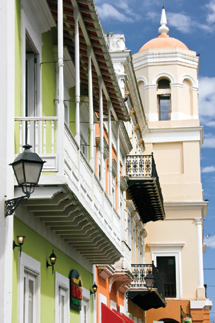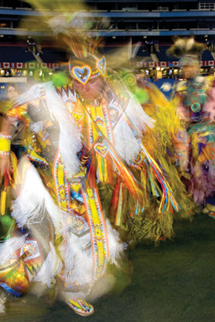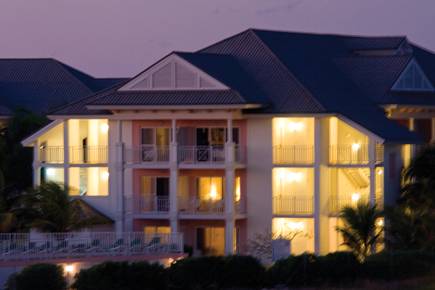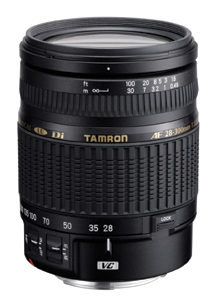Your Boston Bruins where the main original six dance shoes teams that began the NHL. The Boston Bruins wherever created in 1924 and so they where the first Us based hockey group. In 2013 Boston Bruins have many matches if you want to get cheap Boston bruins tickets then you must go on TicketDove.com where you can find the cheap rates tickets.
Tamron’s AF28-300mm F/3.5-6.3 XR Di VC LD Aspherical [IF] Macro; The First Tamron Lens With Vibration Compensation Stabilizer Page 2
While reviewing my images on a professional monitor, and after making some
inkjet prints, I made the following observations:
· Peak performance is provided in the 28-135mm range at f/8 to f/13: adequate
for a very sharp 8.5x11"print. Even images made at the widest apertures
produced good 8x10" glossies; center sharpness is high but stopping down
to f/8 improves edge sharpness.
· Image quality remains quite high in the 135-200mm range especially at
f/8 to f/13.
· At longer telephoto focal lengths, center sharpness is fine at f/8 but
there's more obvious softness in all other areas. When using the 200-300mm
range, a bit of extra sharpening (in camera or during post-processing) can be
useful. After applying Smart Sharpen in Photoshop or Elements, my best long
telephoto shots made for 5x7" glossies that look great in our family album.
· Distortion of lines is very well controlled. Darkening at the corners
(shading) is also minimal, barely noticeable even at wide apertures. In both
aspects, this is better than average performance for a 28-300mm zoom.
· The multilayered coating plus the corner-cut lens hood (included) combine
to provide very effective control against flare from external light sources.
That was certainly a benefit when shooting on very bright days on tropical islands.
 |
|
|
Like most all-purpose zooms, this one provides the best edge-to-edge sharpness and brightness at mid-size apertures. By comparison, the expensive pro lenses are optimized for high performance at wide apertures. That's a benefit because it allows for using faster shutter speeds at low ISO levels where any camera provides the "cleanest" images. On the other hand, this Tamron zoom's VC stabilizer reduces the need for fast shutter speeds to prevent blur from camera shake. That makes ISO 100 adequate for most daylight photography, although ISO 400 can be useful when shooting at small apertures when using a polarizer or on very dark, overcast days. Most of today's D-SLR cameras produce excellent image quality at ISO 400, making this level a fine choice even for general picture taking.
 |
 |
||
|
|
The Bottom Line
I can certainly understand why the 28-300mm range has been so popular, particularly
among owners of 35mm film cameras. On a D-SLR however, the equivalent focal
length range is roughly 32-450mm (most Nikon cameras) or 44.8-480mm (most Canon
EOS models). Digital shooters who enjoy wide angle picture taking should check
out the digital-only Tamron 18-250mm f/3.5-6.3 Di II while those who prefer
telephoto photography will want the newer zoom instead. (You can find my 18-250mm
Di II Test Report using the Search feature at www.shutterbug.com.)
The Vibration Compensation feature adds real value. Because the stabilizing
effect is most valuable at long focal lengths, it's understandable that
Tamron decided to install their new system in this particular lens. (Presumably,
the company will employ the VC mechanism in other products as well.) As my tests
confirmed, VC is very effective in minimizing the effects of camera shake, the
primary cause of unsharp photos. Families who are looking for a versatile zoom
with all of the latest technology should certainly find this one to be a very
attractive choice.
 |
|
|
VC Effectiveness
Note: Although this lens is available in Canon and Nikon AF mounts, the Vibration
Compensation system will not operate with the original EOS-1Ds or with some
discontinued 35mm bodies: EOS 100, 10, 650, 620, 630, 850, 750. That may be
problematic in theory but very few families today are using one of those cameras.
However, the Nikon mount version will provide VC with all Nikon digital and
35mm SLRs; it will also autofocus with cameras such as the D40/D40X since the
lens is equipped with the necessary focus motor.
 1 |
|
 2 |
|
 3 |
|
 4 |
|
|
I was often able to get sharp photos at a 1/125 sec shutter speed at the 300mm end--a 480mm equivalent focal length--instead of the 1/500 sec speed required with a conventional lens. Occasionally, even images made at 1/90 sec were adequately sharp for nice 8x10" glossies. By bracing the camera or my elbows on a firm support, I made some sharp photos even at a 1/2 sec shutter speed at a 65mm equivalent focal length. Everyone's personal stability differs, so others will get different results, but the bottom line is that the VC system is very effective.
 Technical
Specifications
Technical
Specifications
Angle Of View (Diagonal): 75°23'-8°15'
(with APS-C size sensor)
Construction: 18 elements in 13 groups
Minimum Focus Distance: 13.9"
Maximum Magnification: 1:3 at 300mm
Filter Size: 67mm
Dimensions/Weight: 3.06x3.9" (78x99mm); 19.4 oz (555g)
Mounts: Available for Canon and Nikon (35mm or digital) SLRs
Street Price (Average): $649
For more information, contact Tamron Lenses USA, Inc., 10 Austin Blvd., Commack, NY 11725; (800) 827-8880; www.tamron.com.
A long-time "Shutterbug" contributor, stock photographer Peter K. Burian (www.peterkburian.com) is the author of "Mastering Digital Photography and Imaging" and several "Magic Lantern Guides" to SLR cameras. He is also the co-author (with Tim Grey) of "Photoshop Elements 5 Workflow" and teaches two online digital photography courses at BetterPhoto.com.
- Log in or register to post comments


































